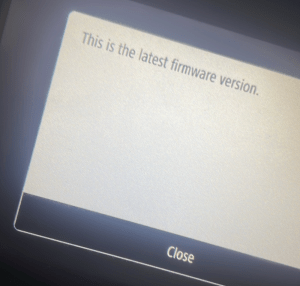For the second year running, LRQA took part in the well-known cyber security competition Pwn2Own, held in Toronto last week. This competition involves teams researching certain devices to find and exploit vulnerabilities. The first winner on each target receives a cash reward and the devices under test. All exploits must either bypass authentication mechanisms or require no authentication.
Last year at Pwn2Own Toronto, LRQA were successfully able to execute a Stack-based Buffer Overflow attack against the Canon imageCLASS MF743Cdw printer, earning a $20,000 reward.
This time around, LRQA chose to research the Canon MF753Cdw printer, leading to the discovery of an unauthenticated Arbitrary Free vulnerability.
Living off the Land
The Canon MF753Cdw printer runs a custom real time operating system (RTOS) named DryOS, which Canon also use in their cameras. Like many other RTOS based devices there is no ASLR implementation, which means once a vulnerability is discovered that can hijack control flow, any existing function in the firmware can be reliably jumped to using the function’s address. This includes all kinds of useful functions such as socket(), connect() or even thread creation functions.
As part of the exploit chain, a handful of functions were used to connect back to the attacking machine to retrieve an image, which would then be written to the framebuffer of the printer’s LCD screen.
Firmware Updates
Pwn2Own requires exploits to work against the latest firmware versions at the time of the competition. During the testing and exploit development stage, the printer was updated using the firmware update option exposed directly through the printer’s on-screen menu, which appeared to update the firmware to the latest version.

Competition Day
Each entry in the competition gets three attempts to exploit the device. Unfortunately, each of our attempts failed in unexpected ways. The arbitrary free vulnerability was being triggered, however there was no connection made back to retrieve the image to show on the printer’s screen. After talking to the ZDI team about what may have gone wrong, they asked about which firmware version was being targeted. This highlighted that our version was older, even though the printer clearly stated we had the latest firmware version.
The Issue
It turns out that if the printer is updated through the on-screen menu then Canon will serve an older firmware version, whereas if the printer is updated through the desktop software (provided by Canon on their website) a later firmware version will be sent to the printer. This led to a mismatch in the exploit between the addresses used to call certain functions, and the addresses of those functions in the later firmware. Overall this led to the shellcode not being able to make a connection back to the attacking machine and therefore the exploit attempts failing during the timeframe of the competition.
Conclusion
Although we were not able to exploit this fully during Pwn2Own, this would be possible with additional time using the correct firmware version. At the time of writing this zero-day vulnerability remains unpatched, and therefore only high-level details have been included within this article. Once vendor disclosure is complete and an effective patch available publicly, LRQA will publish a full technical walkthrough in a follow up post.



